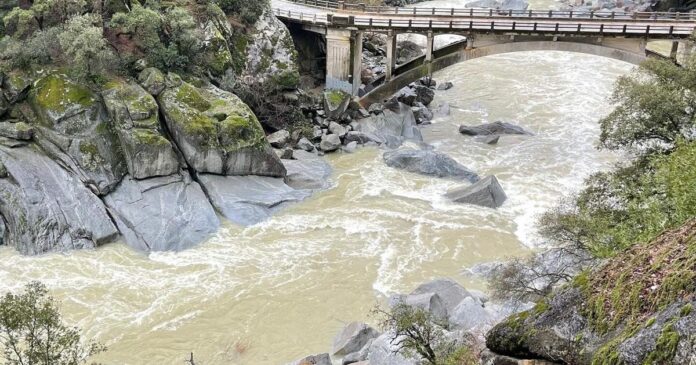Torrential storms continue to wash over the state, resulting in high, fast water in our streams and rivers and a color closer to chocolate milk than a pure mountain stream. What is going on below the surface, and what might it do to the spring and summer fishing ahead?
The flood waters move the river bottom rocks and gravel and a considerable amount of the insects are crushed. There are insects down multiple feet below the bottom that can survive, but there is definite decline in the insect populations in the top layers. What we can expect is poor feeding opportunities in the near term for trout.
In a typical season following scouring flows, the insect populations are down and the fish do not put on much weight. The good news is that nature abhors a vacuum and the subsequent season the population rebounds with an over abundance of insects before dropping back to normal populations the third year. The severity of the insect decline is dependent on the intensity of the scouring.
Another thing that I used to ponder: How did the trout survive severe conditions? The answer came a number of years ago when I was driving along the Merced River downstream from Yosemite, outside the park. The river was a turbid brown and there were standing waves as the water went over the huge boulders in the river. I was walking my dog on the roadside. We came to a small bridge over a feeder creek with clear water. Upon a second look into the pool below the bridge, I realized that it was filled with dozens of trout. They knew what was coming with the snow melt in the high country and migrated to a side stream to avoid the raging flood. They apparently have dealt with this before.
Another strategy steelhead use when migrating up in flood conditions is to move to the edges where the current is less. Oftentimes they will come up off the bottom where there is more suspended silt and debris to find more “breathable” water near the surface.
A third strategy is to migrate downstream to a lake, if available. Here there is no current and the silt can drop out of the water column. A case in point is Bullard’s Bar. Rainbow trout are a rarity in Bullard’s during the warm weather months. In the winter there can be very good trout fishing. I assume that it is the migration habits that make the rainbows available this time of the year.
I checked in with Tom Page, Reel Angler’s Fly Shop, who has been guiding on Bullard’s recently due to the tough conditions on the Lower Yuba. His clients have been landing good numbers of bass from the lake. But each of his trips he will spend some time targeting streams flowing into the lake. These locations can hold bass but there are some which can hold a school of rainbows. They will cast the float & fly rig into the creek flow at the bank, letting it drift out on the current. On a recent trip his clients landed seven rainbows from one small creek mouth. In reservoirs, like Bullard’s Bar the highest concentration of food is riding on the incoming flows. Even the smallest of creeks can bring food into the system.
Tom showed me a cell phone photo of an 8# spotted bass caught in the last week on Bullard’s from an undisclosed location. In the background was an incoming stream.
Our best bet for a good day on the water is one of our local lakes. Scott’s Flat is full and spilling with green water. Bullard’s Bar has come up 15’ since the first of the year and the water is green. Lake Oroville has risen 50 vertical feet in the same time frame. I have no word on water color. One of the best conditions for a bass bite is a rising water level.
The weather man is holding out hope for a break in the storms which could make for a window of opportunity.
Denis Peirce writes a fishing column for The Union’s Outdoors section and is host of “The KNCO Fishing & Outdoor Report,” which airs 6-7 p.m. Fridays and 5-6 a.m. Saturdays on 830-AM radio. Contact him via his website at http://www.trollingflies.com
Credit: Source link































